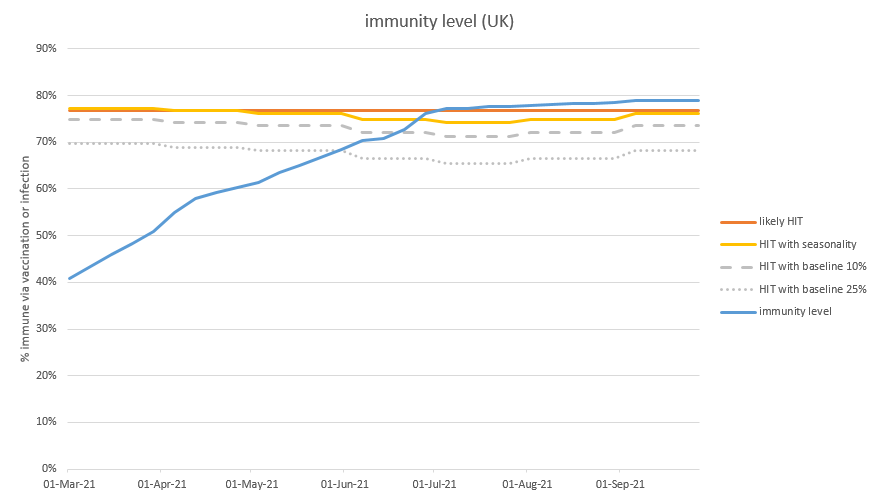
for those of you too distracted by Eurovision to read the PHE's technical briefings, here's a quick summary thread. first, the bad news:
1) as per press reports earlier today, B.1.617.2 appears to have a moderate degree of vaccine 'escape' particularly after 1 dose 1/n
1) as per press reports earlier today, B.1.617.2 appears to have a moderate degree of vaccine 'escape' particularly after 1 dose 1/n

2) looking at secondary attack rates, B.1.617.2 appears to have a transmission gain of around 50-60%; some of this will be due to the vaccine escape, but as I noted earlier, that's not enough to explain 50-60%, so there's probably an uplift in R0 also 2/n
https://twitter.com/JamesWard73/status/1396069217284284418?s=20
but there's also quite a bit of good news, some obvious and some less so:
1) the vaccine escape is much smaller after 2 doses than after 1 (so once we're fully vaxxed, much less of an issue)
2) there's no sign yet of large numbers of re-infections, suggesting that immunity.. 3/n
1) the vaccine escape is much smaller after 2 doses than after 1 (so once we're fully vaxxed, much less of an issue)
2) there's no sign yet of large numbers of re-infections, suggesting that immunity.. 3/n
... from prior infection is mostly unaffected by the variant
3) also no sign of any change in hospitalisation rates, although it's early days on this data
4) since B.1.617.2 is already more than 50% of cases in the UK, and yet the national case rates are still flattish... 4/n
3) also no sign of any change in hospitalisation rates, although it's early days on this data
4) since B.1.617.2 is already more than 50% of cases in the UK, and yet the national case rates are still flattish... 4/n
... this suggests that B.1.1.7 must be shrinking fast (squashed by the impact of controls + vaccine). So while R may increase a bit in the next 2 weeks as B.1.617.2 takes over completely, and due to the Step 3 relaxations on Monday, this will be offset by more vaccine and... 5/n
...better weather. So it feels unlikely R will get above 1.3, and should then come back down (helped by the half term week). The trickier question is what happens when we open on June 21st. My gut feel is this is still in the "just about manageable" category but it's... 6/n
... not a slam dunk, and I will need to run some new model scenarios over the next day or two before giving a clearer view on that. More soon (but not tonight!). /end
• • •
Missing some Tweet in this thread? You can try to
force a refresh




